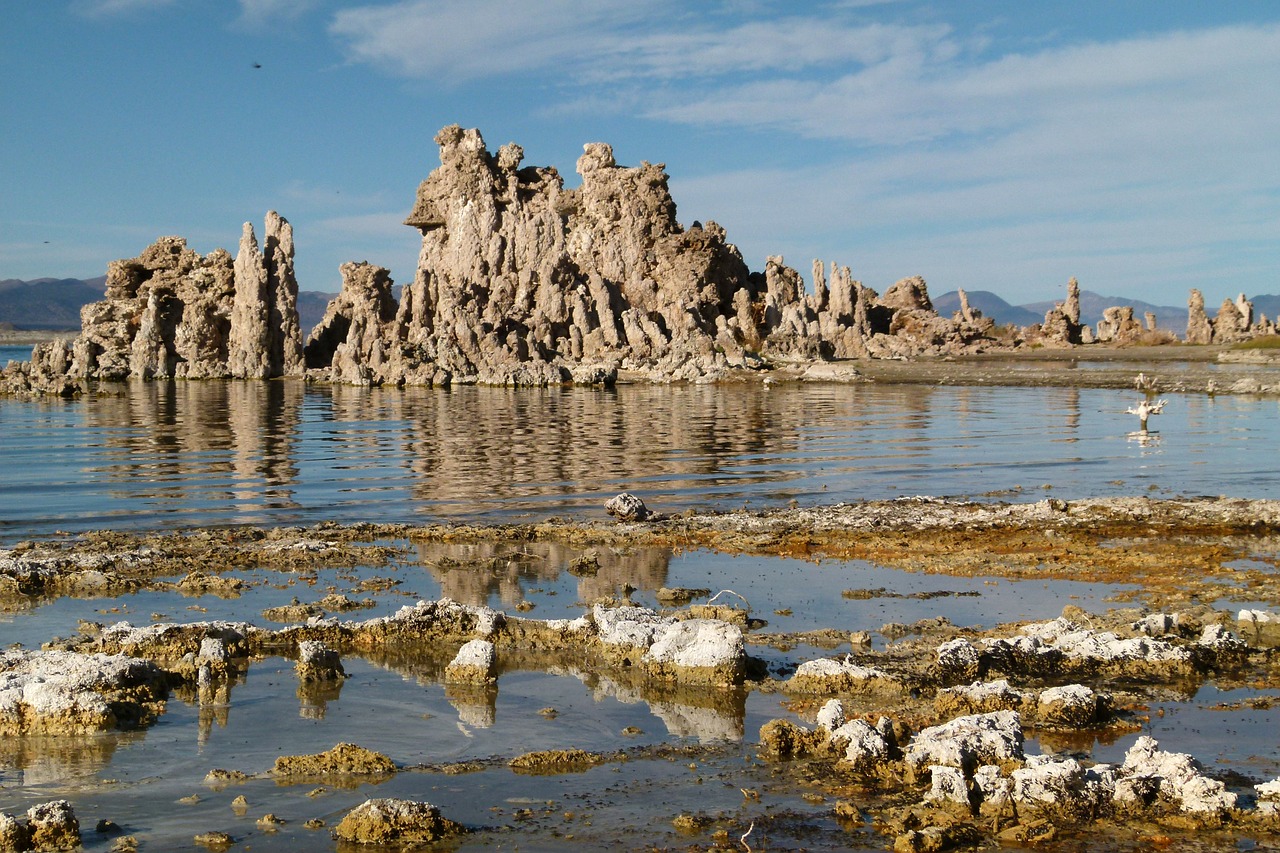Recently saline Mono Lake attracts a lot of attention and posts in different media. The reason is the drought in California that impacts the lake water level. The LA Times reported, “In recent months, the Department of Water and Power has reduced its take from [Lake] Mono’s tributaries by more than two-thirds. Still, the 1-million-year-old lake is within two feet of the level that state officials say threatens the alpine ecosystem at the base of the eastern Sierra Nevada. Unless the region gets a significant amount of rain by the next official water level reading in April, Mono may fall to 6,377 feet in elevation, triggering a halt to any diversions.”
The reason for keeping the water levels up isn’t only about salinity. MNN.com reported earlier in the year that “Any further drop in water level is a frightening prospect for biologists concerned about the well-being of the birds that nest on Negit Island in the middle of the lake. The lower the water drops, the easier it is for coyotes to get out to the island. In 1979, water levels dropped so low that a land bridge leading out to the island broke the surface, and coyotes devastated the nests of gulls. It took 20 years for the birds to return to the island to nest.”
The Mono Lake is famous with its tufa towers that are the result of mix of underwater springs rich in calcium with lake water rich in carbonates. When the calcium comes in contact with carbonates in the lake, a chemical reaction occurs resulting in calcium carbonate — limestone. The calcium carbonate precipitates around the spring, and tufa tower will grow. While the beauty of the lake attracts a lot of media attention, it is an example of specific for saline lakes chemical, biological and hydrological interactions that make saline lakes both unique and vulnerable.

